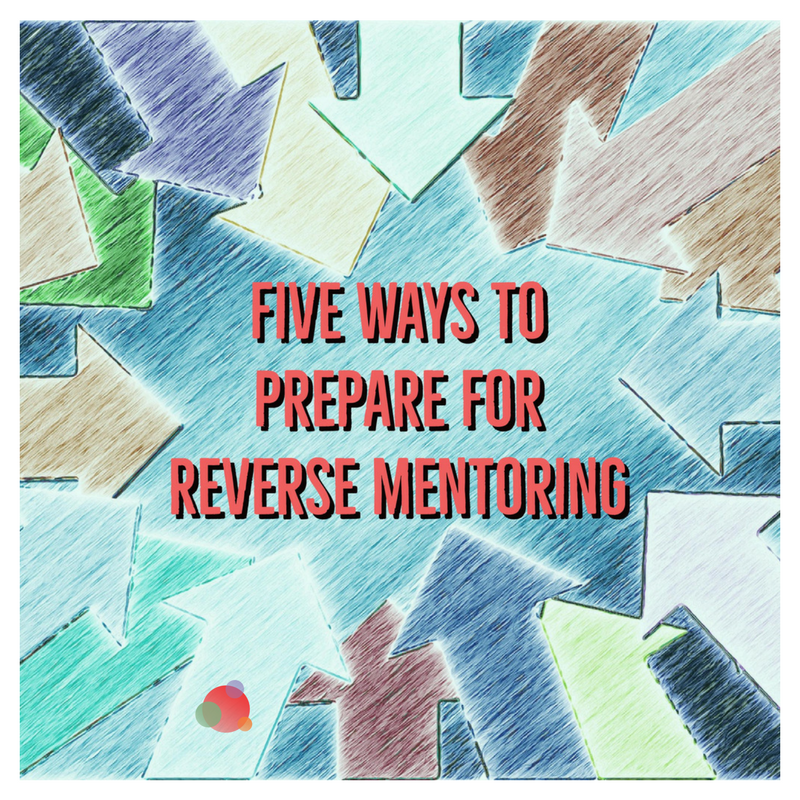 Mentoring has changed throughout the years.
Mentoring has changed throughout the years.
My first experience as a mentor dates back to the 1990s when relationships were more formal.
The mentor had years of experience and the mentee significantly less.
The learning was limited to the time you spent in person or on the phone.
There were no social media communities such as Facebook groups to jump into when you wanted to learn more about your profession.
Twitter chats didn’t exist, but professional and student communities such as #ContentChat, #TwitterSmarter, and #PRStudChat have scheduled tweet chats or answer questions on a daily basis through their hashtags.
Today, mentoring is everywhere because the classroom has expanded beyond the four walls of an educational institution.
But, what’s changed the most?
The ability to mentor and be mentored simultaneously as a result of social media and collaborative technology.
Reverse mentoring is not necessarily a new concept; it’s been around for a long time.
However, the scope of reverse mentoring has expanded as more professionals find collaborative ways to learn together.
Prepare for Reverse Mentoring
For me, reverse mentoring is one of the best ways to learn.
But, you have to be open to knowledge sharing especially from all of your colleagues, regardless of their years of experience.
Let me give you an example.
A couple of years ago, a PR student reached out to me with some questions about internships, interviewing tips, and securing a position after college.
I was happy to meet with her.
I went to our Starbucks mentoring session ready to answer her questions.
What I didn’t realize was the tables would turn very quickly.
About halfway through our discussion, I began asking my mentee about her experiences on Snapchat.
I wanted to know what Millennials thought of brands who were on the platform.
Was it annoying or did they like to interact with their favorite brands?
We also talked about Snapchat as a way for professors and professionals to interact with students.
I walked away with much more knowledge than I had anticipated.
In hindsight, I thought about how professionals could benefit more from reverse mentoring if they walked into the situation ready, and with the right mindset.
Here are five considerations to keep in mind so you can fully take advantage of the mentoring and reverse-mentoring process:
Put Your Ego and Years of Experience Aside
Realize before your meeting that whoever you’re mentoring has interesting and unique experiences based on who they are, and their experiences to date.
For example, my daughter is currently working for an agency in Long Island handling social media content for their clients.
It doesn’t matter how much time I’ve spent running a company or mentoring younger professionals.
I listen carefully to her thoughts on what people expect on Instagram and Snapchat.
I also pick her brain about some of the latest content development and curation tools.
My ego immediately gets checked at the door before.
Perk Up Your Ears and Listen Carefully
As a seasoned professional, you can’t just say this; you have to show you do the same.
Listening is a secret weapon to learning, regardless of who’s in your presence.
When you can step back and listen carefully, and you’re not so anxious to share your thoughts and opinions, you’ll get so much more from a conversation.
Not only is it an opportunity to learn, but it’s also an excellent way to build a relationship.
Realize that Feedback is a Gift
The gift comes in the form of positive comments, and, sometimes, helpful criticism.
Get ready to receive both.
Today, Millennials are becoming leaders in business.
It’s not about their age; it’s how they inspire and build trust with their constituents, just like any other leader.
If you look at your peers, clients, employees as just an age or number, then valuable feedback doesn’t get through.
I work with successful Millennial CEOs and executives who have reached leadership status before the age of 30.
Their teams don’t look at their age or the number of years in business.
They’re looking for inspiration, vision, and guidance to help them learn, grow and be successful, too.
Come Prepared with Questions You Would Like Answered
Think about your work or recent campaigns and how a younger perspective may help.
Do you have all of the answers you need?
Can you imagine if you prepared for a mentoring and reversed mentoring session as if it were a first job interview?
When you go to a job interview, you take the time to research the company and your interviewer.
Your questions are an opportunity to learn and then stand out.
The same goes with reverse mentoring.
If you do your due diligence, you’ll have targeted questions to gain new knowledge and ways to advance too.
Ask about New Apps, Platforms, and Communities
Find out what technologies your mentees are currently exploring.
You’d be surprised at what you can learn from asking this question.
When I was chatting with a younger colleague about Facebook advertising and how brands are finding it difficult to generate organic traffic, my colleague brought up Facebook Pixel Helper and remarketing.
The reverse mentoring process kicked in, and I immediately began taking notes.
You may find reverse mentoring just happens as you’re networking on social media, or even when you’re in person.
However, if you take the time to think ahead and ready yourself, the benefits from a mentoring and reverse mentoring session will be 10-fold.